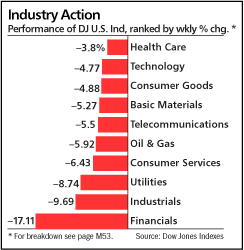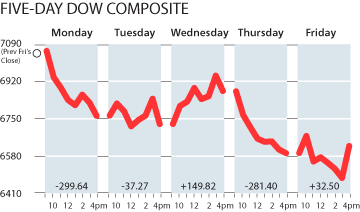AT&T Delivers Solid Second-Quarter Results Highlighted by Strong Wireless Growth, Double-Digit Increase in IP Data Revenues, Further Ramp in AT&T U-verse TV Subscribers
Dallas, Texas, July 23, 2008
>$0.63 reported earnings per diluted share, up 34.0 percent versus $0.47 in the year-earlier second quarter
>$0.76 adjusted earnings per diluted share, up 8.6 percent from $0.70 in the second quarter of 2007
>Consolidated operating income margin expansion to 21.3 percent reported from 16.8 percent in the year-earlier quarter and 25.1 percent adjusted versus 23.9 percent
>15.8 percent increase in wireless revenues with wireless data revenues from areas such as Internet access, messaging and e-mail up a robust 52.0 percent
>More than 1.3 million net gain in wireless subscribers to reach 72.9 million in service; postpaid subscriber churn down to 1.1 percent, lowest level in company's history
>16.1 percent growth in wireline IP data revenues driven by strong increases in consumer video and broadband revenues and in business services such as virtual private networks (VPNs), managed Internet services and hosting
>Significant turnaround in wholesale customer revenues, second consecutive quarter of sequential growth reflecting solid demand from wireless carriers, Internet service providers and other customers
>Further ramp in AT&T U-verseSM TV subscribers, with a net subscriber gain of 170,000 to reach 549,000 in service; on trajectory to exceed 1 million subscribers in service by the end of this year
Reported ResultsFor the quarter ended June 30, 2008, AT&T's consolidated revenues totaled $30.9 billion, up 4.7 percent versus reported results in the year-earlier quarter and up 3.6 percent compared with second-quarter 2007 pro forma revenues, which exclude merger-related accounting impacts on directory revenues.
Compared with results for the year-earlier quarter, AT&T's reported operating expenses for the second quarter of 2008 were $24.3 billion, down from $24.5 billion; reported operating income was $6.6 billion, up from $4.9 billion; and AT&T's reported operating income margin was 21.3 percent, up from 16.8 percent.
AT&T's reported second-quarter 2008 net income totaled $3.8 billion, up from $2.9 billion in the year-earlier quarter, and reported earnings per diluted share totaled $0.63, up from $0.47 in the second quarter of 2007.
Wireless Operational HighlightsAT&T delivered strong wireless growth in the second quarter with solid subscriber gains, continued rapid growth in wireless data revenues and improved margins. Highlights include the following:
>15.8 Percent Wireless Revenue Growth. Total wireless revenues increased 15.8 percent to $12.0 billion in the second quarter, and wireless service revenues, which exclude handset and accessory sales, grew 14.8 percent to $11.0 billion. Wireless revenue growth was driven by solid subscriber gains and a greater number of customers choosing more advanced smartphones and integrated devices, spurring increased usage of data services. Retail postpaid subscriber ARPU (average monthly revenues per subscriber) was up 3.5 percent versus the year-earlier second quarter.
>Wireless Data Services Up 52.0 Percent. Wireless data revenues grew 52.0 percent versus the year-earlier quarter to $2.5 billion, reflecting continued strong adoption of services such as Internet and data access, e-mail and messaging. Wireless Internet access revenues more than doubled versus results for the year-earlier second quarter, while revenues from e-mail, messaging and data access all delivered greater than 50 percent growth. Text messaging volumes tripled versus totals for the year-earlier quarter, and multimedia message volumes increased more than 170 percent. At the end of the second quarter, approximately 18 percent of AT&T's postpaid wireless subscribers had an integrated device, up from 8 percent one year earlier. On average, these subscribers have ARPUs roughly double the company average. AT&T expects continued strong growth in wireless data services as more customers choose data plans and advanced wireless devices such as the new iPhone 3G, which was launched as an AT&T U.S. exclusive on July 11. In the first 12 days following launch, sales of the iPhone 3G were nearly double levels achieved in AT&T's 2007 iPhone launch.
>Solid Wireless Subscriber Growth with Reduced Postpaid Churn. AT&T's second-quarter net gain in total wireless subscribers exceeded 1.3 million, down 123,000 versus results in the second quarter of 2007 and up 38,000 compared with the first quarter of this year. Retail postpaid net adds totaled 894,000, down 2.0 percent versus the year-earlier second quarter and up 26.8 percent from results in the first quarter of this year. This sequential postpaid improvement was achieved despite reduced iPhone sales ahead of the early July iPhone 3G launch. Retail postpaid churn moved down to 1.1 percent in the second quarter, the lowest level in the company's history.
>Wireless Operating Income Growth. On a reported basis, AT&T's second-quarter wireless operating expenses totaled $9.0 billion, and operating income was $3.1 billion, up 91.0 percent from $1.6 billion in the second quarter of 2007. Adjusting for merger integration costs, wireless operating expenses totaled $8.4 billion, and operating income was $3.6 billion, up 38.9 percent from $2.6 billion in the second quarter of 2007.
>Continued Strength in Wireless Margins. Strong revenue growth, network efficiencies and operational improvements continue to drive strong wireless margins. AT&T's reported wireless operating income margin in the second quarter was 25.5 percent, up from 15.4 percent in the year-earlier quarter, and its adjusted wireless operating income margin was 29.9 percent, up from 24.9 percent in the year-earlier quarter. AT&T's second-quarter wireless OIBDA service margin was 41.2 percent, up from an unadjusted 35.8 percent and an adjusted 37.5 percent in the year-earlier quarter. (OIBDA service margin is operating income before depreciation and amortization, divided by total service revenues.)

















